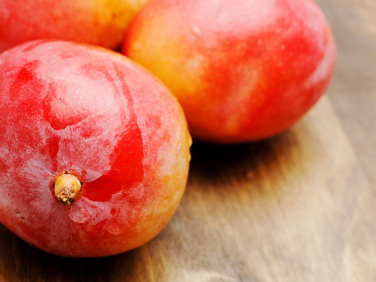
reference-image, l
(article, Culinate staff)
If you live in California, Hawaii, or the southern U.S. states, you might be lucky enough to have a banana plant or avocado tree in your backyard. If you live farther north, you probably still can't resist slicing a banana over cereal or mashing up an avocado for guacamole. Some tropical fruits, even when grown on the other side of the globe, just seem like everyday fare to most of us. Some are still strange, oddly shaped treats sitting in "tropical" or "ethnic" corners of grocery stores. Nearly all of them taste fabulous when served ripe, raw, and sprinkled with fresh lime juice, chile flakes, and salt. Familiar or foreign, here's a quick roundup of eight tropical fruits we enjoy. [[list(culinate8). #(clear n1). [%image cherimoya float='clear right' width=250]Cherimoyas (custard apples). The rare but delicious cherimoya is a bit like an avocado: you eat neither skin nor shiny seeds but only the soft flesh, scooped out of the green, scaly skin with a spoon. Cherimoyas are in season from winter through spring. Their taste and creamy texture mean they blend well with ice cream, smoothies, yogurt, and the like, but many prefer them au naturel. #(clear n2). [%image avocado float='clear right' width=250]Avocadoes. East Coasters know the large, smooth, green-skinned Florida avocado; West Coasters are more familiar with the smaller, bumpy, black-skinned Hass variety. In taste-offs, the Hass usually wins. Several other varieties are cultivated, however, which means that avocadoes are usually available year-round. Buy your avocadoes slightly underripe (firm but not hard) and let them soften at home for a few days; overripe avocadoes tend to squash on the way home from the store. Recipe: Butter Lettuce and Spinach with Citrus and Avocado #(clear n3). [%image pineapple float='clear right' width=250]Pineapples. Despite its spiky appearance and dense heft, a pineapple is a fragile thing. Pineapples must be picked just when ripe and shipped to market immediately, because if they're harvested too young, they'll never ripen. Hawaiian pineapples are available year-round, but their peak season is in April and May. Caribbean pineapples have two seasons: winter and late summer. Pineapples are famous for their role in pineapple upside-down cake, but there's no need to waste a fresh, expensive pineapple on this baked dessert; use canned pineapple instead. If you do buy a perfectly ripe, expensive pineapple, treat it right: twist off the leaves and carefully slice away the spiny peel and woody core. Cut the remaining flesh into triangles or cubes and serve in fruit salad, smoothies, or straight up. #(clear n4). [%image reference-image float='clear right' width=250]Mangoes. As with bananas, many different mangoes are grown around the world, but only a few of them regularly reach U.S. markets, including the so-so Tommy Atkins and the much better Champagne mango. Recently, the U.S. also agreed to import the vastly superior mangoes of India. Indian mango season runs from March through May. Mexican and Florida mangoes are commonly available in U.S. markets from March into September; some mangoes from Brazil and Haiti also make their way here in the winter. Delicious alone, mangoes are also excellent in salsas, salads, smoothies, dairy-rich desserts, and chutneys. Recipe: Mango and Chicken Summer Rolls with Soy-Mango Dipping Sauce #(clear n5). [%image papaya float='clear right' width=250]Papayas. Unripe papaya is famous for its central role in the Thai dish known as green papaya salad, in which shreds of crunchy, translucent green papaya are mixed with fish sauce, lime juice, chiles, palm sugar, and peanuts. But ripe or almost-ripe papayas are more commonly available in the U.S. Papayas start appearing in U.S. stores in the spring and peak in the summer. Assessing ripeness can be a little tricky; a papaya that's starting to feel soft on the outside may still be too hard to dig a spoon into on the inside, and spoonability is what you want. Slice a ripe, soft papaya in half lengthwise, scoop out the seeds, and squeeze a lime over the halves. Serve with a spoon, and you're done. #(clear n6). [%image lychees float='clear right' width=250]Lychees (and rambutans). If perfume were edible, this is what it would taste like: intensely wet, sweet, and floral. Lychees, also spelled litchis, are fun to peel (the crisp outer shell pops off easily) and even more entertaining to eat (you just gnaw the soft white flesh away from the hard central nut). Like mangoes, lychees are at their best in late spring and early summer. Most Asian markets carry them, often prepackaged in net bags. Eat them fresh or turn them into juice, smoothies, or a refreshing sorbet. #(clear n7). [%image starfruit float='clear right' width=250]Carambola (starfruit). When cut crosswise into slices, the colloquial name for this watery fruit is obvious: the fruit has five ribs, making a perfect star. Don't peel a starfruit, but if its ribs have browned, slice off the browned bits. Finally, pop out the seeds before eating. Carambola fruits are in season in the fall and winter. The fruit is both juicy and firm, making it durable in salads, salsas, chutneys, and even on the grill. #(clear n8). [%image bananas float='clear right' width=250]Bananas. If you've read Dan Koeppel's Banana, you'll know that the banana has only been popular in the U.S. for about a century, and that the banana we currently eat is the Cavendish, a mild fruit that replaced the tastier but disease-stricken Gros Michel about half a century ago. Red and baby bananas also occasionally turn up in U.S. stores, as do plantains, the banana's starchier relative. Bananas are harvested year-round, which is why they're always available in U.S. stores. You want to eat bananas when they're a rich yellow (duh) or speckled with brown spots, but you don't want to bother with plantains until their skins have turned completely black, and even then you'll have to cook them. Recipe: Banana Boats ]]

reference-image, l
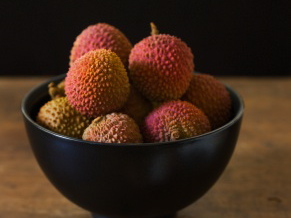
lychees, l
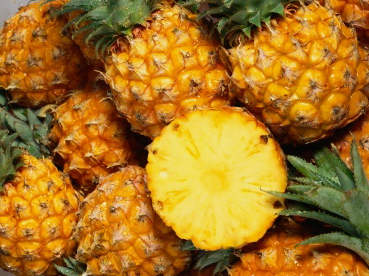
pineapple, l

avocado, l
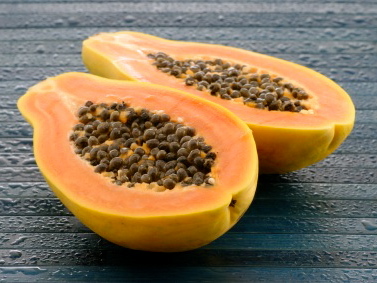
papaya, l
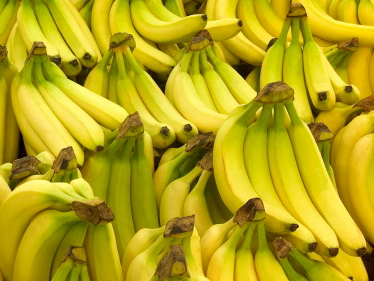
bananas, l
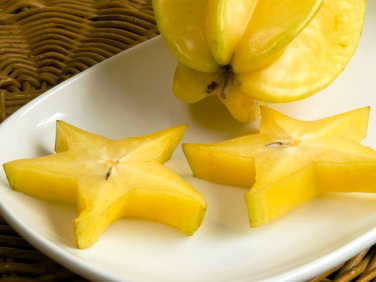
starfruit, l
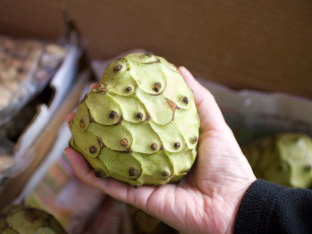
cherimoya, l